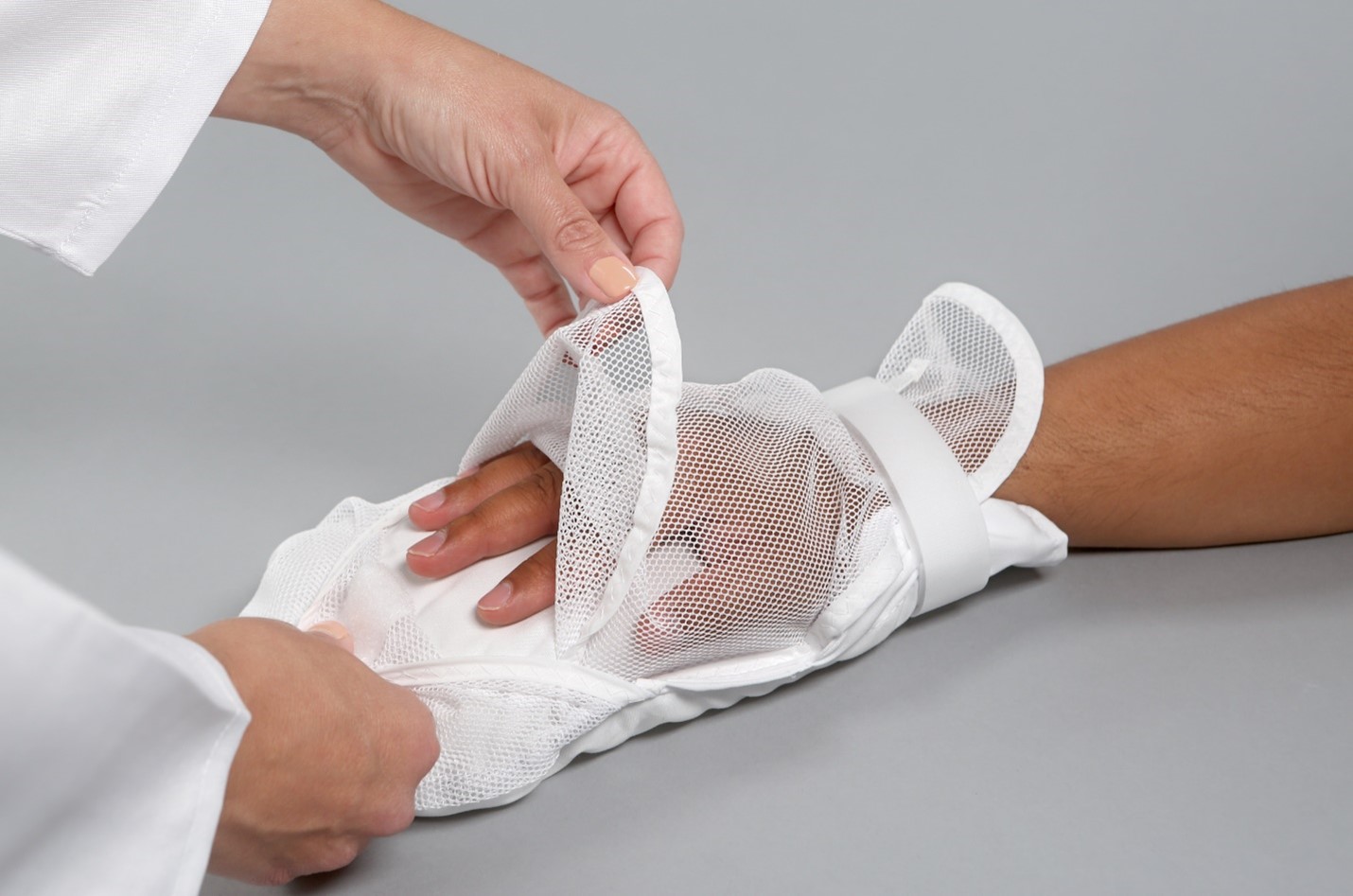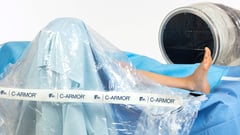 Categorizing Patient Safety Restraints: Least to Most Restrictive
Categorizing Patient Safety Restraints: Least to Most Restrictive
In healthcare settings, patient care sometimes requires elevated patient safety. While it’s never a goal to restrain patients, situations arise where temporary measures are necessary to limit movement and mitigate risk of harm.1
Matching restraint type to need depends on patient behavior and condition.1 It is expected that nurses attempt distraction methods first, followed by the least restrictive restraint option possible.1
Making quick and confident decisions depends on understanding which devices are considered ‘less restrictive medical restraints’ and where they fall on the spectrum of movement limitation from least to most restrictive. For example, Posey® products from TIDI are generally categorized as follows:
Now, let’s break down the categories and consider practical applications.
Patient Mitts and Patient Soft Arm Splints
Patient mitts and soft arm splints (e.g., Posey SecureSleeve®) are among the least restrictive medical restraints. Patients can move their arms up and down and wiggle their fingers without impediment but bending and grasping will be limited. These restraints help deter patient removal of medical devices, IV lines, tubes, or drains.
The latest Posey innovation in patient mitts is the Mesh Peek-a-Boo® Mitt. This device’s see-through mesh facilitates skin checks by healthcare professionals and provides improved airflow/breathability. The mitt’s innovative design includes an inspection flap for easy access to the patient’s hand, and hook-and-loop closures that allow healthcare providers to increase or decrease restrictions based on patient behavior/need.
Patient Self-Releasing Belts
Another less restrictive option for patient safety is a self-releasing belt. Designed for patients at risk of falling or in need of a restraint-alternative device for medical treatment, these belts largely serve as a reminder for the patient to call for assistance before exiting a bed or wheelchair.
Note that if a patient can self-release, then no restraint order is required. The following is an excerpt from guidelines published by the Centers for Medicare & Medicaid Services (CMS):
“Generally, if a patient can easily remove a device, the device would not be considered a restraint. In this context, ‘easily remove’ means that the manual method, device, material, or equipment can be removed intentionally by the patient in the same manner as it was applied by the staff, considering the patient’s physical condition and ability to accomplish the objective.”2
Patient Roll Belts
Patient confusion or impulsiveness may warrant the use of a roll belt. These prescription-only devices keep patients from attempting unassisted bed, chair, or wheelchair exits that could lead to injury. Roll belts are intended for use by healthcare professionals endeavoring to help patients remain in a bed, stay seated, or maintain safe general body positioning.
Many additional types of prescription-only medical restraint belts are available for patient safety, including key lock restraint belts, Swedish restraint belts, and pelvic restraint soft belts.
Patient Soft Limb Holders and Patient Cuffs
As patient behaviors escalate, more restrictive restraints may be necessary. In these instances, violent or aggressive tendencies are often exhibited. Here, the use of physical restraints is appropriate to prevent (or stop further) self-harm and/or prevent injury to (or escalation of threats against) staff.3
Soft limb holders and patient cuffs (e.g., Posey Twice-as-Tough® Cuffs) limit the movement of limbs for patients assessed to be at risk of disrupting life-saving treatment, pulling lines or tubes, exacerbating skin conditions, inflicting self-injury, or compromising wound site integrity. To ensure maximum patient comfort and skin protection, limb holders offered by Posey have soft wraps and Twice-as-Tough Cuffs are made from neoprene.
Patient Safety Vests
Among the most restrictive medical restraints are chest vests, which affix to immovable parts of beds or chairs to make sure patients safely remain in place. Posey Safety Vests, for example, are designed with secure straps and quick-release ties or buckles to ensure patient safety and comfort while discouraging unassisted exits from beds or wheelchairs. Using these vests provides comfortable, secure patient positioning for certain medical treatments.
Restraints Reminder
Restraints should only be used as a last resort. However, when faced with the decision of which restraint to utilize, remember that applying the least restrictive measure required to successfully manage patient safety for a given set of circumstances is always the right course of action. We encourage you to visit TIDI Academy online for easy access to a variety of free continuing education webinars that cover topics such as de-escalation techniques and the appropriate use of restraints.
TIDI’s Posey-brand patient safety products have long prepared nurses to handle the unexpected with professionalism, discretion, and compassion. Learn more about how TIDI protects patients and supports caregivers, as well as the many ways in which we assist nurses. Contact the TIDI team today.
SOURCES
1 American Nurse Today (C. Rose), Choosing the right restraint, Volume 10, Number 1. Published online: January 13, 2015. Accessed online: January 2022. https://www.myamericannurse.com/choosing-restraints/
2 https://www.cms.gov/Regulations-and-Guidance/Guidance/Transmittals/downloads/R37SOMA.pdf (page 96)
3 American Nurse Today (G. Springer), When and how to use restraints, Volume 10, Number 1. Published online: January 13, 2015. Accessed online: January 2022. https://www.myamericannurse.com/use-restraints/






 Categorizing Patient Safety Restraints: Least to Most Restrictive
Categorizing Patient Safety Restraints: Least to Most Restrictive

